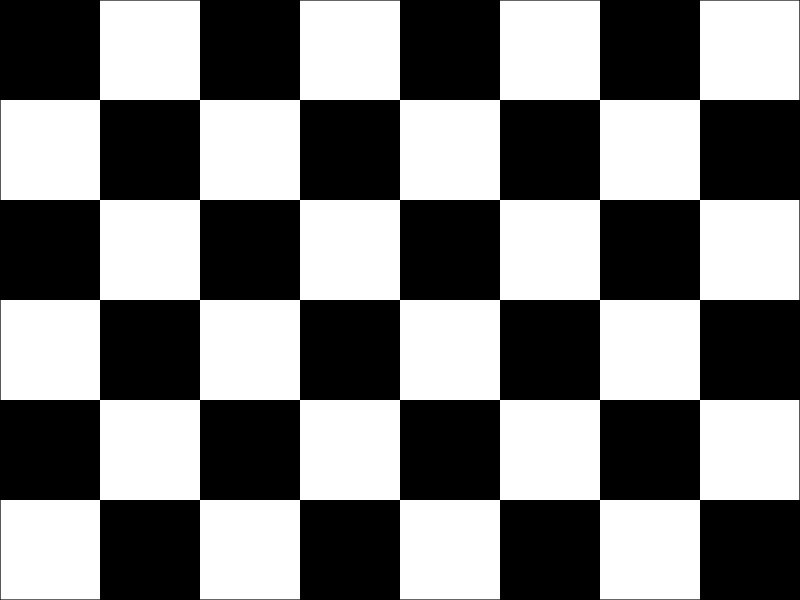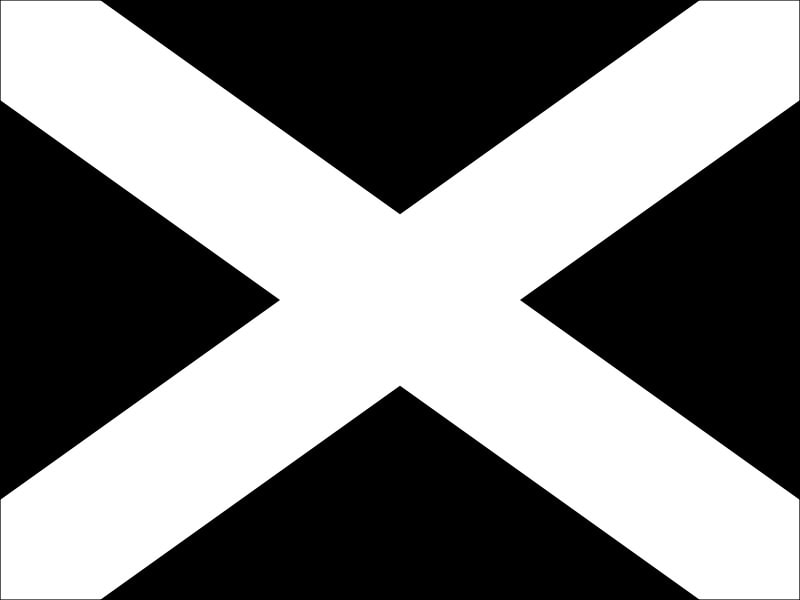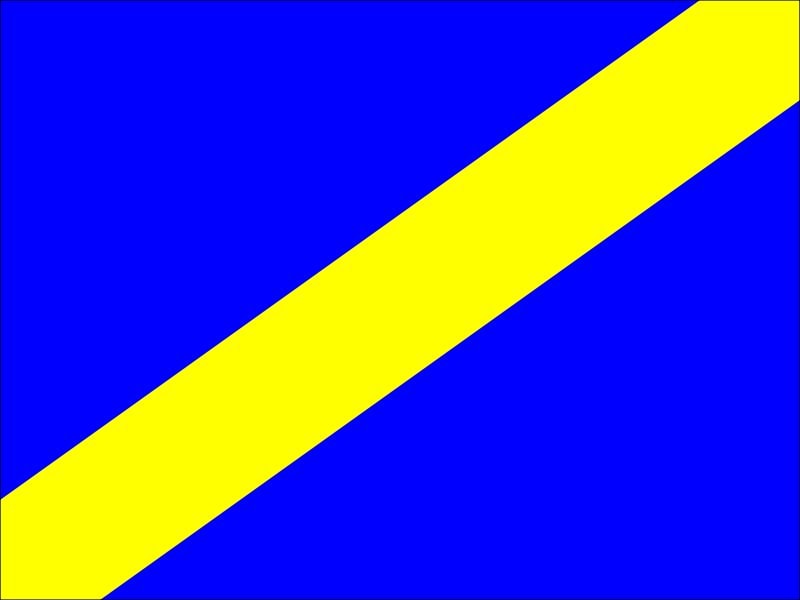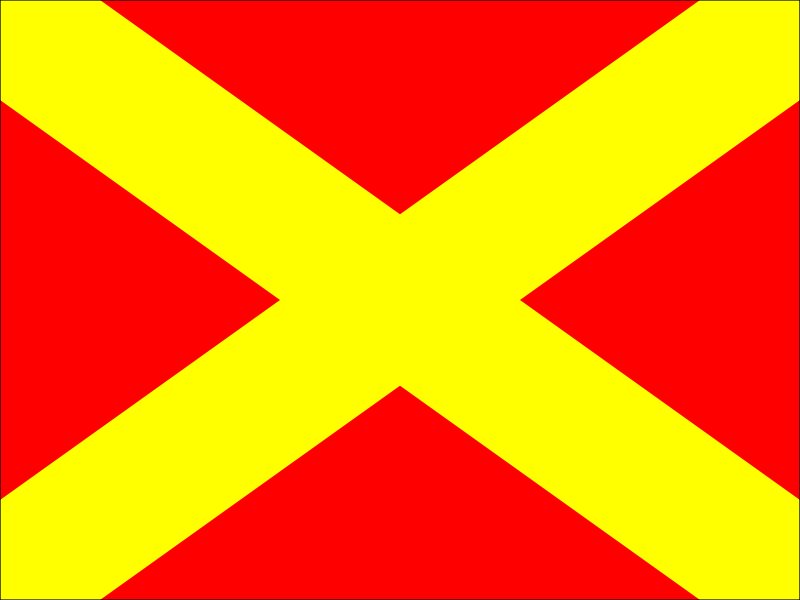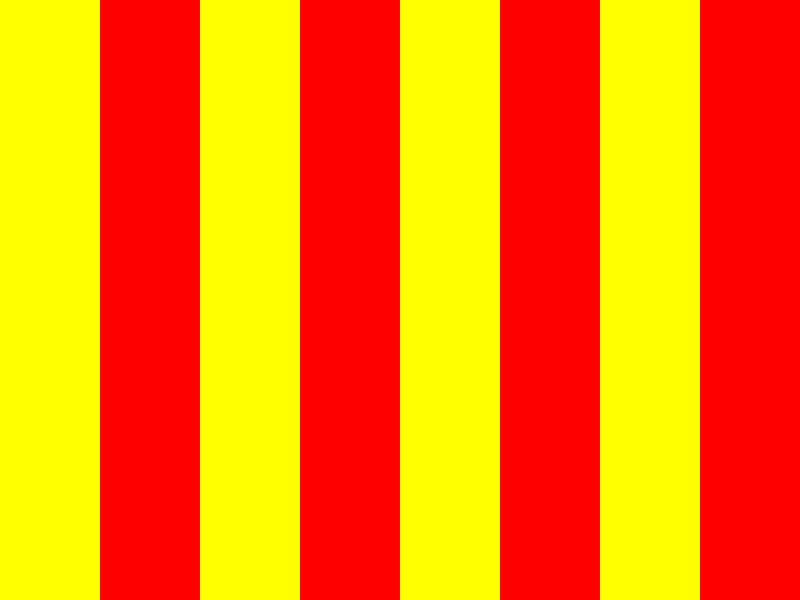NASCAR has only 11 racing flags, aimed to help the race officials control the championship races weekend in and weekend out. From our previous "Racing Flags" sessions, it's quite obvious this North American racing series has the fewest flags from all major motor sport competitions worldwide. Whether that's because the cars keep running in ovals (most of the times) or not, we don't know. However, the next-to-be-explained race flags are a sine-qua-non element of arguably the most popular racing series in the American continent.
Actually, only a maximum of 9 race flags can be shown during a Sprint/Nationwide/Truck Series event, as the yellow and the blue can never be shown during the same race. The former is only shown by the race officials during oval events, while the latter can only be seen during road-course events. Also, the slippery flag is only shown in road-course events.
As one will easily notice, a driver may very well miss a flag - especially if we're talking about a black one - while in the race. It's only human, as they have to focus 100 percent on pushing themselves to the limit in order to score a good result. This is where the team comes in and tells their driver, via the radio, that he has to make a short visit to the pits and explain some of his actions to the NASCAR officials.
But enough with the small talk, let's talk flags:
Green Flag
The green flag is waved by the race officials on two occasions. Either at the beginning of the race, after the formation laps, or after a caution has ended. In both cases, the NASCAR drivers are informed that they are allowed to resume racing on track. The green flag is used during both oval and road-course events for all NASCAR-sanctioned series.
There are a considerable amount of things that can force the officials to deploy the pace car, from a severe crash as a result of a racing incident to an animal being spotted on the track or nearby. Also, there are situations like the one at the Atlanta Motor Speedway (during the 2009 Kobalt Tools 500) when a tire from the pits is approaching the racetrack and could cause a racing incident. Therefore, the officials will wave the yellow flag for preventable purposes also.
This flag is also waved if an emergency vehicle is on the track or if a slight drizzle or heavy rain starts pouring down the racetrack (as known, NASCAR racing is forbidden under rainy conditions).
Under yellow flag, no driver is allowed to pass the safety car unless specifically instructed by the NASCAR officials. Under the “Lucky Dog” rule, the first driver a lap down to the leaders is allowed to unlap himself when the caution comes out. The exception from that rule is when the driver is one lap down as a result of a penalty handed by the race officials or mechanical problems. Also, the aforementioned rule is not applicable in the last 10 laps of the race.
Unless the “Lucky Dog” rule is applicable, any driver who passes the safety car is subject to NASCAR penalties. On oval tracks, the yellow flag will be maintained for a minimum of 3 laps (enough for the leaders to make their pit stops).
This flag could be caused by several incidents, either we're talking about a major pile-up resulting in some bad crashes or wether conditions. If several cars are involved in a racing incident and emergency vehicles are making their way to the racetrack, the race will probably be stopped. Also, under heavy rain, NASCAR racing is strictly prohibited due to the characteristics of the cars (the safety of the drivers cannot be guaranteed on slippery conditions, as there NASCAR-sanctioned tires do not have the necessary amount of grip to keep the cars on the racing line.
According to the NASCAR rules, the red flag is always followed by a few laps of yellow flag, in case the racing conditions do get better, therefore allowing the cars and pit crews to warm up before a potential restart.
The driver must pit immediately within the next 5 laps in order to consult with the racing officials on something he did during the race. The flag is enabled under several circumstances, from breaking a rule while in the race to speeding in the pit lane.
Also, if a competitor is driving his car below the minimum speed limit allowed by the NASCAR, he will be called to the pits. Either he'll end his race in the garage or the teams will fix the problems with his car and he'll continue to race. Also, if a car loses oil on the racetrack or some other parts of it come down while in the race, the driver will be shown the black flag.
It means the driver is no longer eligible to score NASCAR-sanctioned points in the race and be disqualified from the race. These are usually rare situations in NASCAR. Even if a driver should miss the black flags for 5 consecutive laps – as impossible as it may seem – the pit crew lets him now about this situation via the radio.
Although the flag is optional, the NASCAR officials might very well opt to sanction the soon-to-be-lapped drivers if they repeatedly choose to let the trailing cars pass them. After all, fair-play is not dead...
Yellow Flag
When they are waved the yellow flag, all NASCAR drivers are warned that an unusual or hazardous situation is awaiting them on the track and that they should slow down. The pace car is immediately deployed by the race officials, and all drivers are obliged to stay behind it until the car returns to the pits.There are a considerable amount of things that can force the officials to deploy the pace car, from a severe crash as a result of a racing incident to an animal being spotted on the track or nearby. Also, there are situations like the one at the Atlanta Motor Speedway (during the 2009 Kobalt Tools 500) when a tire from the pits is approaching the racetrack and could cause a racing incident. Therefore, the officials will wave the yellow flag for preventable purposes also.
This flag is also waved if an emergency vehicle is on the track or if a slight drizzle or heavy rain starts pouring down the racetrack (as known, NASCAR racing is forbidden under rainy conditions).
Under yellow flag, no driver is allowed to pass the safety car unless specifically instructed by the NASCAR officials. Under the “Lucky Dog” rule, the first driver a lap down to the leaders is allowed to unlap himself when the caution comes out. The exception from that rule is when the driver is one lap down as a result of a penalty handed by the race officials or mechanical problems. Also, the aforementioned rule is not applicable in the last 10 laps of the race.
Unless the “Lucky Dog” rule is applicable, any driver who passes the safety car is subject to NASCAR penalties. On oval tracks, the yellow flag will be maintained for a minimum of 3 laps (enough for the leaders to make their pit stops).
White Flag
Alongside the chequered flag, the white flag is only seen once a race by the NASCAR field. It means the drivers have only one more lap to go until the finish line.Chequered Flag
Blessed are the driver who first sees – and gets to – the chequered flag. That means the race is over and the driver crossing the finish line in first place gets an automatic ticket to the victory lane.Red Flag
When the race officials display the red flag, all action on the racetrack must stop. Unlike in other racing series, the red flag doesn't only mean the drivers have to stop from racing, but also the pit crews. If a car is at the pits for refuel and a new set of tires, the mechanics are obliged to stop working on the machinery on the duration of the red flag.This flag could be caused by several incidents, either we're talking about a major pile-up resulting in some bad crashes or wether conditions. If several cars are involved in a racing incident and emergency vehicles are making their way to the racetrack, the race will probably be stopped. Also, under heavy rain, NASCAR racing is strictly prohibited due to the characteristics of the cars (the safety of the drivers cannot be guaranteed on slippery conditions, as there NASCAR-sanctioned tires do not have the necessary amount of grip to keep the cars on the racing line.
According to the NASCAR rules, the red flag is always followed by a few laps of yellow flag, in case the racing conditions do get better, therefore allowing the cars and pit crews to warm up before a potential restart.
Black Flag
The black flag does not refer to the entire NASCAR field but to a single driver. When showing the black flag, the race officials usually show a race number attached to it. It's also nicknamed the “consultation flag.”The driver must pit immediately within the next 5 laps in order to consult with the racing officials on something he did during the race. The flag is enabled under several circumstances, from breaking a rule while in the race to speeding in the pit lane.
Also, if a competitor is driving his car below the minimum speed limit allowed by the NASCAR, he will be called to the pits. Either he'll end his race in the garage or the teams will fix the problems with his car and he'll continue to race. Also, if a car loses oil on the racetrack or some other parts of it come down while in the race, the driver will be shown the black flag.
The Black Flag with an X
This flag will always be shown to a driver after the black one. As aforementioned, a driver shown the black flag has a 5-lap margin to report to the pits. In case he doesn't respond affirmatively to that request, the next obvious step is the black flag with an X.It means the driver is no longer eligible to score NASCAR-sanctioned points in the race and be disqualified from the race. These are usually rare situations in NASCAR. Even if a driver should miss the black flags for 5 consecutive laps – as impossible as it may seem – the pit crew lets him now about this situation via the radio.
The Move Over Flag
Unlike in the FIA-sanctioned racing series, the “Move Over Flag” – Blue Flag with an Orange Diagonal Stripe – is optional. That means a soon-to-be-lapped driver is being warned by the race officials that the leaders are on their tails and about to pass them. However, the driver (or group of drivers) shown this flag is not obliged to let the other drivers pass him.Although the flag is optional, the NASCAR officials might very well opt to sanction the soon-to-be-lapped drivers if they repeatedly choose to let the trailing cars pass them. After all, fair-play is not dead...
